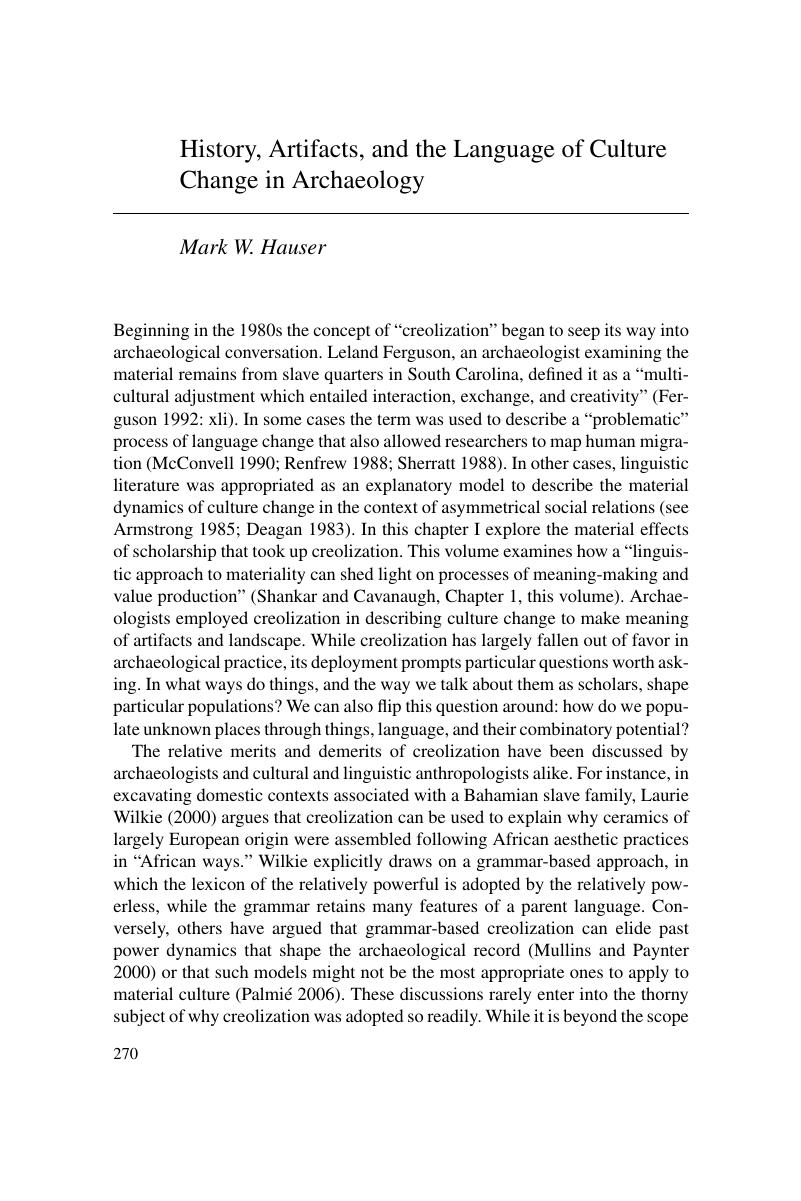Book contents
- Language and Materiality
- Language and Materiality
- Copyright page
- Contents
- Images
- Tables
- Contributors
- Acknowledgements
- 1 Toward a Theory of Language Materiality: An Introduction
- 2 Curated Conversation: “Materiality: It's the Stuff!”
- Part I Texts, Objects, Mediality
- Part II Transformation, Aesthetics, Embodiment
- Part III Time, Place, Circulation
- Part IV More Stuff: Short Topical Commentaries on Language and Materiality and Afterword
- Can Language Be a Commodity?
- Language, Music, Materiality (and Immateriality): Entanglements beyond the “Symbolic”
- Why Bodies Matter
- Physicality and Texts: Rematerializing the Transparent
- History, Artifacts, and the Language of Culture Change in Archaeology
- Afterword: Materiality and Language, or Material Language? Dualisms and Embodiments
- Index
- References
History, Artifacts, and the Language of Culture Change in Archaeology
from Part IV - More Stuff: Short Topical Commentaries on Language and Materiality and Afterword
Published online by Cambridge University Press: 06 October 2017
- Language and Materiality
- Language and Materiality
- Copyright page
- Contents
- Images
- Tables
- Contributors
- Acknowledgements
- 1 Toward a Theory of Language Materiality: An Introduction
- 2 Curated Conversation: “Materiality: It's the Stuff!”
- Part I Texts, Objects, Mediality
- Part II Transformation, Aesthetics, Embodiment
- Part III Time, Place, Circulation
- Part IV More Stuff: Short Topical Commentaries on Language and Materiality and Afterword
- Can Language Be a Commodity?
- Language, Music, Materiality (and Immateriality): Entanglements beyond the “Symbolic”
- Why Bodies Matter
- Physicality and Texts: Rematerializing the Transparent
- History, Artifacts, and the Language of Culture Change in Archaeology
- Afterword: Materiality and Language, or Material Language? Dualisms and Embodiments
- Index
- References
Summary

- Type
- Chapter
- Information
- Language and MaterialityEthnographic and Theoretical Explorations, pp. 270 - 276Publisher: Cambridge University PressPrint publication year: 2017
References
- 3
- Cited by



